Outgoing Airmic CEO John Hurrell looks back on his decade at the helm of the organisation and tells StrategicRISK about his plans for the future
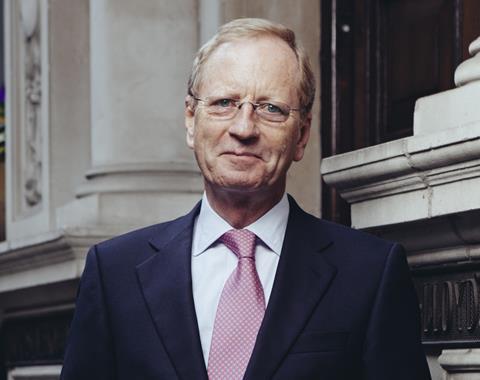
After a lifetime working in risk and insurance, John Hurrell is used to looking ahead and assessing the future. It is a task he has undertaken with demonstrable success, first in a near 30-year stint at Marsh, and latterly in his role as CEO of the UK’s risk and insurance association Airmic, which has transformed completely under his stewardship.
Today is no exception, as Hurrell articulates in some depth his outlook on a diverse range of subjects from board engagement to governance, reputation to the risk profession. He also delivers a prognosis on the insurance industry itself. For once though his own future is also on the agenda because after almost a decade at the helm of Airmic, Hurrell is about to step down and enter what by his standards is a world of uncertainty.
Not that Hurrell is contemplating the “r” word just yet. Retirement, in his case, might just be a sun-kissed horticultural hiatus as he considers his next move.
“I have had three jobs in my life and each has had a weekend between them,” Hurrell says. “I am very happy that my departure from Airmic coincides with the start of the summer so I can spend some time in the garden, but I have loved this business and the profession and I would like to find a way to continue to be involved.”
The reality, you might suspect, is that Hurrell will likely spend the next few months weighing up offers from various professional suitors. He should have plenty of options given his almost unique standing in the industry and the universal respect he enjoys. Few are more highly regarded or acknowledged for their understanding of both sides of the risk and insurance coin and also for their ability to make things happen, particularly in terms of generating wider recognition of the profession within and beyond business.
Hurrell calls his time at Airmic “a fabulous experience” but that hardly does justice to what has been a remarkable period of metamorphosis for the organisation under his leadership.
“In one sense it doesn’t seem like nine years at all because it has gone so quickly but such a lot has happened in that period of time,” says Hurrell.
When he took on the role of CEO, in the immediate aftermath of the global economic meltdown of 2008, Hurrell said it was the invitation to “make a difference” which piqued his interest. And his determination to do precisely that was evident from the outset.
“I realised within about five minutes of being here what a fantastic opportunity this was,” he says. “I had thought it was going to be but it has been just a brilliant platform to work from. There were no restrictions, it was simply a case that if you want to do something just do it and see how it works. The only real criteria was (and continues to be) how to make a positive difference on behalf of Airmic members.
“When I first arrived at Airmic, I came to the conclusion there were two things which had to happen. We [Airmic] had to be a part of what was going on in the market. We weren’t going to sit on the sidelines and whinge. We wanted to be part of the solution, whether on the insurance side or the risk side.
“We had to be a player and an actor but to do that we needed to build up the strength and resources of the team in the sense of the credibility of the brand and the technical contribution.”
Achieving that took an element of internal restructuring and reorganisation. This was instrumental to the success of what was to follow and Hurrell is quick to acknowledge the massive contribution made by the colleagues he calls a “terrific team” to achieve Airmic’s objectives.
“We wanted to work with the insurance market in terms of the way it operated – hence the what we have done with the Law Commission,” he says. “We also wanted to do more from the risk management point of view because we felt more of our members were heading into the risk space. Some of them faster than others, some with more confidence and pace than others.
“We wanted to shape that. As this was post financial crash there were a lot of people looking at risk management, not least the Financial Reporting Council. We wanted to be involved and help our members to be part of the solution on the risk side, hence the focus with Cass Business School and Cranfield University on the Roads To [Ruin/Resilience] research.”
Hurrell has long seen the value of partnering with like-minded organisations to support Airmic’s objectives in terms of promoting risk and insurance management to a wider audience. It is an approach which has been consistent throughout his time at Airmic.
“We made connections with groups such as CIMA, the Chartered Institute of Management Accountants and Tomorrow’s Company, the Chairman’s Forum and other trade and professional bodies which were having an influence at board level and the way boards were thinking about risk,” he says.
“We wanted our hat in the ring to influence the outcome of those deliberations and to make sure we had one eye on what it meant for our members and how could we help them take advantage of it. This then led to the next phase of Airmic’s development - the Academy - and the focus on training which took some of the research that we were doing and some of the thinking on the insurance and the risk side and made sure we gave our members the opportunity to be engaged and involved.”
None of what Hurrell outlines was conjured overnight, with some of the projects years in the making, but the progress has yielded continuing results.
“We have got to the stage now where a lot of this has come to fruition,” Hurrell says. “Risk is a boardroom agenda item. Not all our members are involved in those strategic levels of discussion but more and more are and increasingly will be.
“The market has responded to the changes we wanted to see brought about, particularly driven by the Insurance Act. The market, in terms of its focus on customers and its response to new and emerging risks is, I believe, way ahead of where it was when I started in this role.”
Hurrell cites the Insurance Act as the “most profound change we had an influence on” in his time at Airmic.
“I remember standing in front of an Airmic conference after two or three years of being here apologising to delegates that we had not done anything about the Marine Insurance Act 1906 for the prior 100 years!” he says. “So we put it on the agenda and three or four years later we had the Insurance Act.”
Airmic worked closely with the market, the Law Commission and, latterly, “with government” to help achieve the most profound and positive change in insurance contract law in more than a century.
“We got a tick in every single box,” Hurrell says. “It is still early days in a sense but in the end the insurance industry absolutely became 100 per cent supportive and has been so ever since. It was quite a complex process to get everyone out board and aligned and to get a result.”
Hurrell is equally proud of the ground-breaking and acclaimed “Roads To” research which, he acknowledges, has had a significant impact “on the thinking of the risk management community”.
“We knew what we wanted to do but the results exceeded even our own expectations and have had a major influence on risk management thinking in the UK and beyond. I’d like to acknowledge the influential role played by our Technical Director at the time, Paul Hopkin in the shaping and successful outcome of these pieces of research,” he says.
Hurrell might be stepping down but he knows the work he started is far from over.
“There is still a long way to go because the world is moving ever faster,” he says. “We wanted to get Airmic to a point where it was a player in all these areas and it is but all we have done is get to Everest base camp. It is now up to my successor [John Ludlow] and the team to see how far they can take it.”
Base camp, in Hurrell’s mind, is getting risk on the agenda. “We know thanks to our work with the Chairman’s Forum that chairmen of FTSE 250 companies and beyond absolutely have risk as a main board agenda item on a regular basis,” he says.
“Probably every board now has risk on the agenda. However – and this is where the opportunity lies and also where the challenge is – as a generalisation, many boards are not sufficiently close to their operations to be confident that they are able to discharge their governance responsibility for risk oversight. They look down into their organisations and they see silos. And one silo is ours, the risk community, and they believe that it is important for the risk community to develop much closer relationships with, for example, legal, financial, technology, brand and reputation etc. They have to be part of a more consistent and integrated approach to risk, which then has a much higher level of connectivity with corporate strategy and what the board is doing.”
As a result “the next step for Airmic is to get more of our members who feel they have an appetite and aptitude for developing a higher level approach to the link between risk and strategy and to get them to be able to do that”.
This, says Hurrell, is where the latest in Airmic’s research series – “Roads To Revolution” - will be focused when it is published next year. Similarly, training “such as our senior Leadership Development Programme” which is “all about getting people more comfortable with operating at board level”.
“We have now launched this to our members and are already oversubscribed with a waiting list for our first year which starts in September,” he says.
“Airmic will also continue to keep an eye on the way in which people think about risk,” says Hurrell.
“We will continue to sit on ISO committees and work with the FRC and influence other professions such as accountants and auditors and the way they are thinking and to make sure we recognise in those conversations the roles we think our members can best play to support their organisations.”
The risk profession has changed considerably during Hurrell’s Airmic tenure – so too, he believes, has the perception of risk among boards.
“The awareness of their vulnerability has improved enormously,” he says. However, more still needs to be done. “When I present to boards I use a picture of an aerial view of Dover Castle which has a tower in the centre and five levels of barricades around it. The psychology of many boards has been that they are sitting in the centre of that tower, probably on the top floor, well removed from the threats because outside of their immediate environment they have got rows of compliance and strong balance sheets.
“They have layers of middle management and they are not seeing what is happening out there in the real world which is occurring really fast. Of course, as VW and United Airlines have understood most recently, when a crisis occurs they are actually in a glass house.
“At that point, everything becomes totally transparent and not only is it transparent prospectively, it is also transparent retrospectively. What has been happening? How did they get to that point? Boards are beginning to realise that just because they are sitting on the top of a fabulous tower block, supported by a lot of infrastructure – that is not going to protect them from the reality of risk hitting them.
“They are beginning to appreciate that. We had a series of breakfast meetings with chairmen last year and historically when they have put risk on the agenda, the focus has been about strategic risks, Capex, M&A etc. Sometimes there has been a lack of awareness and a lack of appreciation of just how profound some of the operations risks are – those which they think are being managed perfectly well within the company – the significant effect on their brand and reputation when things go wrong.
“Would anyone at VW at board level have thought through the implications of what happened to them with DieselGate? Would the chief executive of United Airlines, ten minutes before that passenger was hauled off one of his planes, have contemplated the implications of what was going to happen? That is where I think the challenge is – the connectivity between what is going on in the business and what is happening at board level is not well enough established and I believe it is part of our members’ responsibility to think what are the strategic implications of the risks they face every day on brand and on reputation and how they get those messages to the board.
“Not from the point of view of a negative message to the board but more in terms of ‘here are valuable assets that we have as a brand in terms of reputation or operational capability that we need to preserve and we need strategic level support to help us address those issues’.
“There is horizontal connectivity and also vertical connectivity and our members need to be spending much more time with their opposite numbers within the key functions of the business.”
Both VW’s DieselGate and the United Airlines incident had a major impact on the image of the companies involved and Hurrell says reputation risk has also become much more prominent – particularly because of the speed of social media.
“You can’t do anything anywhere in the world [and not be noticed],” he says. “If it is interesting, if it is going to make a good YouTube clip then it is going to be there. And very often the public will be exposed to an incident before even the board gets a proper briefing. The speed is the challenge and that means boards can be wrong-footed very quickly which is why many boards make inappropriate statements. They get exposed to a problem because of social media. The mainstream media picks on what is happening and is at them before the board can have a briefing and proper think through about what the issues are. The reputational impact will be immediate and potentially global if it is about a global brand.”
Hurrell says Airmic will shortly publish the results of research on what keeps its members awake at night and “brand and reputation is No1 again”.
He acknowledges that there is still debate within the risk community about whether or not reputation is a risk in itself or a consequence of other risks. To ensure an effective approach to managing reputation, Hurrell advocates a method gaining increasing popularity among Airmic’s members.
“They put reputation right in the centre of the mind map and look at each of their stakeholders and consider what the reputation within that stakeholder group depends upon. They then examine the risks to that stakeholder group – one of which is going to be media, one might be customers, one staff – and the critical dependencies of their reputation on that. They then go straight to those threats and challenges and manage their way from there.
“If you are talking about a spreadsheet with a thousand risks and a thousand consequences – you end up with the same thing - but it is much faster if you put reputation at the heart of the mind map.”
Reputation, Hurrell readily admits, is an issue which continues to challenge the insurance industry. While some progress has been made in terms of handling intangible risks, more still needs to be done. He does accept that it is “really difficult” for insurers to adapt to the current climate.
“If it was easy then they would have done it years ago,” he says.
“Digital risks, for example, are moving so fast that it is quite difficult for insurers to use historical methods which is basically to look in the rear-view mirror at claims experience or track record. Even when they are trying to underwrite a risk, their client is very often investing in new technology and new areas which even our client does not understand truly, let alone the insurance industry.
“A lot of insurers until recently have not really tracked their aggregated exposure to silent digital risk where they have not had cyber exclusions on conventional insurance policies and therefore are underwriting digital risk, not necessarily by design and certainly not having modelled the implications.”
There is real commitment within the insurance industry to achieve meaningful innovation but, Hurrell says, action needs to be quicker.
“A lot of very bright brains are looking to overcome these problems. However, it is against a background of quite thin pricing everywhere and no-one is saying there is going to be a change in the market. It is not as if they are sitting there on unbelievably rich funds to invest in R&D and take risks and take the hit. This has to be done in a very thoughtful way.
“If we are honest we see a lot of enthusiasm, there are great things going on in the market, there are lots of fabulous conversations and a few deals happening but it is not moving fast enough.”
Hurrell clearly enjoys his work and his enthusiasm remains undiminished – so why leave Airmic now?
“One of the very first things I did when I arrived at Airmic was to introduce a nine-year limit for the board because we needed to open up the board to fresh blood and new ideas. That seemed a good idea at the time. I only had a three-year contract so never did I think that it would affect me in any way!”
Contract renewed, Hurrell stayed on a further five years and was then presented with a dilemma of his own making.
“After eight-and-a-half years here I thought I would have to go for re-election which meant I would have to break a rule I introduced. Was that a wise thing to do? At that point I thought, have I done what I wanted to do when I came to Airmic? And the answer was yes. Do I think it is the right thing for Airmic to have fresh perspective, fresh eyes and maybe new experience? Yes?”
Hurrell is delighted that long-time Airmic director and former deputy chairman John Ludlow is succeeding him as CEO and has no doubts “he will be brilliant”.
“He [Ludlow] has a different background to me but nevertheless we share an instinct about the way the profession and the business can grow and add value.”
With the handover already underway, Ludlow officially takes over during June’s Airmic Conference in Birmingham, which will also provide a fitting farewell for Hurrell. Although as the reality of his departure sinks in, Hurrell does nothing to disguise the impression he is reluctant to leave the industry behind for good.
“I have been very privileged to spend most of my career within a few hundred metres of here [the City of London] and this is where it all happens. It is a great market and I want to try to continue to find a way to be useful in some capacity.”
You would not doubt him for a moment.




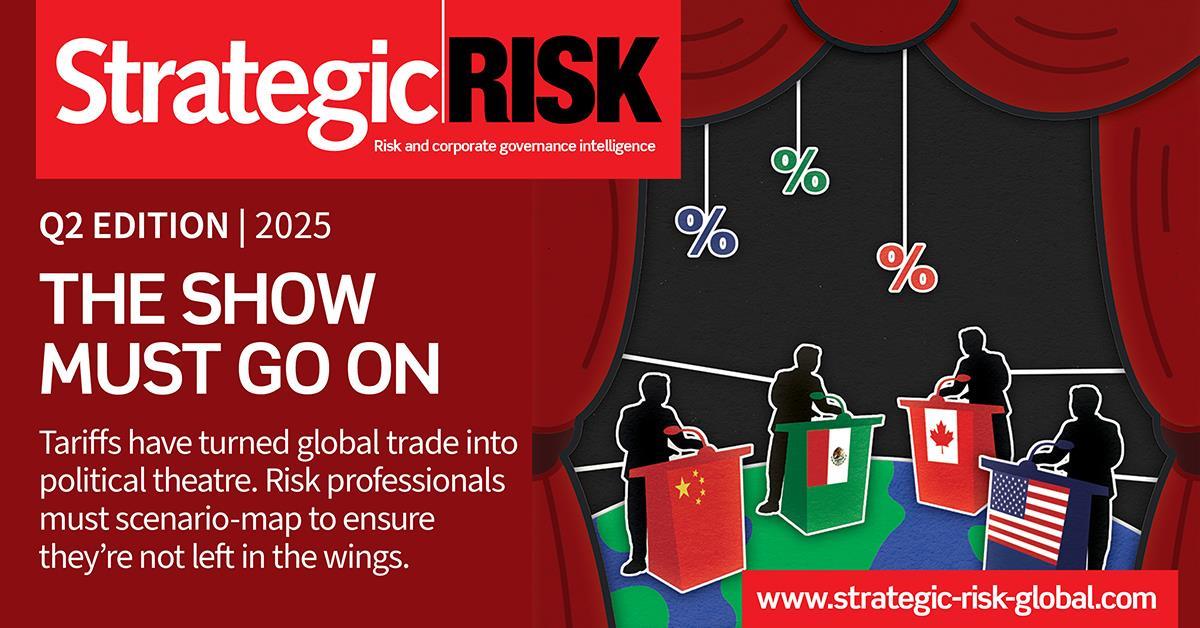
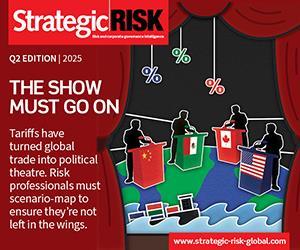

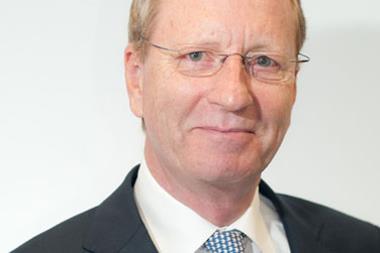




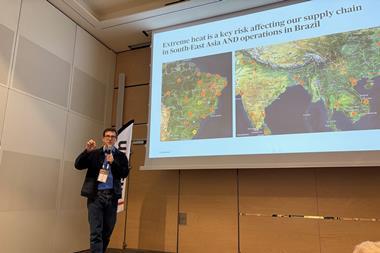


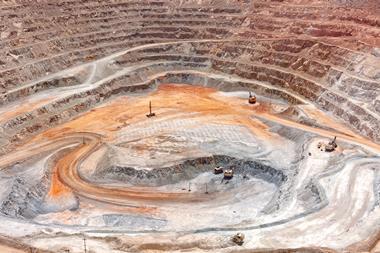





No comments yet